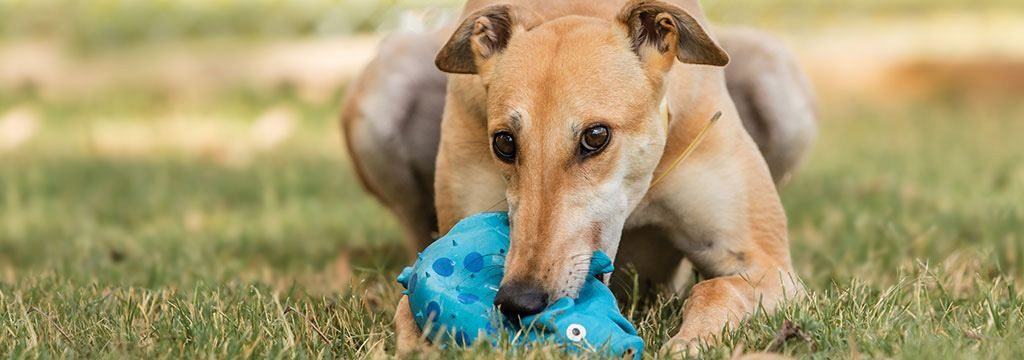Yes! Greyhounds make great pets. They are quiet, well mannered and very easy to live with.
Their friendly disposition and lazy nature means they suit a variety of households. Greyhounds are also described as clean, good natured, and very trusting.
Greyhounds as Pets has a team of animal behaviourists who will assess every dog admitted to the program. They curate individualised training programs for all greyhounds to ensure they are well prepared for life in the home as a pet.
GAP takes a steady and considered approach to preparing dogs for home life. This may include time in foster care, to ease the transition and set up success with their new families.
GAP is the only greyhound rehoming group in WA with the ability to issue green collars. When GAP issues a greyhound with a green collar, it shows the dog has been through the behaviour assessment program and can confidently be taken out and about in the community.
Yes! Greyhounds are known for their adaptability and calm nature in different environments.
GAP has a fabulous team of foster carers who will take in a greyhound for four to six weeks. During this time, the greyhound will be exposed to as many new experiences as possible, including vacuum cleaners, stairs, and large appliances such as washing machines.
Every greyhound that enters GAP is evaluated and will develop a profile used to match them to the most suitable home environment, increasing the chance of successful transition to pet life.
Contrary to what a lot of people think, greyhounds are more like sprinters than marathon runners. This means most of them only require a 15-20 minute walk each day. Many can sleep for up to 20 hours a day so are great for families and busy working people. Like with anything, there are exceptions to the rule, and some greyhounds will require exercise dependent on their energy levels and age. There is a greyhound suitable to everyone’s activity level and home environment.
Greyhounds require much less room than other breeds of a similar size and will often be found curled up somewhere in the home. We have greyhounds living in studio apartments, units, and townhouses, as well as large homes and rural properties. They are well suited to most environments.
The WA Government has amended the Dog Act 1976 and pet greyhounds are no longer required to wear muzzles in public . However, the process at GAP links the muzzle coming off with the green collar going on. This shows the greyhound has gone through a rigorous behaviour assessment prior to being ready for adoption. Everyone fostering to adopt or fostering a greyhound through GAP is issued a wire muzzle to be worn at all times in public areas, including when on walks for the foster period. The foster period is the last step in the behaviour assessment and greyhounds can only receive a green collar once they have officially been adopted from GAP.
Anyone wishing to leave the muzzle on when introducing a greyhound to other pets, children, or new environments – such as a busy dog park – can rest assured the dog is used to wearing one. It does not hurt and they can drink normally while wearing it.
No. Western Australian law stipulates greyhounds must be kept on leash in public places, including off leash dog parks. Greyhounds are sighthounds and are very fast, so even a greyhound with great recall can see something in the distance and run off to reach it. A sighthound in chase mode can accidentally run onto a busy road or into a fence. For both legal and safety reasons, please keep the leash on. There are private spaces available for hire which greyhounds can be let off leash. Additionally, “Zoomieland” in Cannington is a greyhound specific fenced exercise space .
Most greyhounds do not come toilet trained but they are generally very clean dogs. Living in a kennel environment, most dogs do not like to soil their sleeping quarters and will wait until turned out to relieve themselves. When first brought into the home, the greyhound should be treated in a similar manner to a puppy being housebroken. Take the dog outside every couple of hours for the first week or so, especially after meals, play and long naps.
It is important over the first few days to watch the greyhound closely when it is inside your house, so you may correct it immediately if it tries to go to the toilet. When catching the dog in the act, say a firm “NO” and immediately take the dog outside. When it then continues to go to the toilet outside, praise the dog profusely. Do not tell the dog off if it has an accident inside when you are not there to catch it in time. Correcting the dog after the event will only confuse and frighten the dog – corrections must be made at the time, not afterwards.
While greyhounds may not have had much exposure to children their passive nature does make them a versatile family pet. It is important, that children are well-behaved around the greyhound and have respect for his or her boundaries. The nature of the greyhound breed means they are relatively tolerant and accepting of situations like children playing with them, but this should not be taken for granted and children should never be left unsupervised around the dog.
We recommend, as with all dogs, that children are taught to respect their new greyhound and learn to leave the greyhound alone, especially when they are laying down or eating.
GAP aims to ensure the greyhounds going through our program have had some exposure to other breeds of dog. Greyhounds as a breed are quite aloof and while They generally get along well with other dogs, they may not play with them. Common sense should be used during the introductory period and separate feeding is always recommended in a multi-pet household. During the foster period, each greyhound will be introduced to other dogs. In order to experience different living arrangements, such as living alone or with other dogs, foster dogs may be moved between foster homes accordingly.
Like all breeds, some greyhounds are more compatible with some types of animals than others. During the greyhound’s time at GAP, we try to expose them to as many different situations as possible so we can understand how each dog will respond. Then we can provide advice on the best living arrangements for individual dogs, including their compatibility with other pets.
Many will learn to accept other pets if introduced slowly and carefully, always with strict supervision. Any introductions should always be carried out on lead and with the greyhound properly muzzled, until the dog’s reactions can be assessed. Risks should never be taken with the safety of pets.
Both! It depends on what kind of dog you are looking for. We tend to match greyhounds to homes based on the individual personality of the dog and the adopter’s requirements rather than gender. We have placed approximately equal numbers of males and females into homes. There is no hard and fast rule as to whether you should get a male (if you already have a female) and vice versa. We have many happy families living with two female dogs, two male dogs, one of each, or an uneven mix of genders. It all depends on the dogs’ personalities, which is why we offer all adopters a trial period before finalising any paperwork.
For an average sized greyhound, it is recommended to feed a good quality dry food twice daily according to the manufacturers’ recommendations . You may then adjust as required to maintain an ideal body condition. This is usually about one to two cups of biscuits. For variety and interest, you can combine this with fresh meat, tinned sardines, vegetables, pasta, rice and eggs. If you intend to feed a dry-food only diet, please ensure it is labelled as ‘complete’ to ensure your greyhound is getting a balanced intake of all necessary dietary requirements. More in-depth feeding suggestions can be found in our re-homing manual which will come with your greyhound.
Our dogs usually range from two to five years old. We occasionally get puppies and older dogs into the program. The average lifespan of a greyhound is 12 to 14 years.
They are quite a healthy breed, with few inherited health conditions, due to centuries of selective breeding. Many of the medical problems that are common in dogs of similar size (such as hip dysplasia) do not commonly occur in greyhounds. Greyhounds can have sensitivities to anaesthetics, so it is best to take them to a vet that has breed-specific experience if an anaesthetic is required. Other ailments found in this breed may include minor digestion related conditions, bloat, corns, or Pannus (an eye condition which is easily controlled with daily drops).
The adoption fee for all our greyhounds is $200 which includes a dog that is vet-checked, vaccinated, microchipped, de-sexed, wormed and updated dental care.
Greyhounds that are rehomed via GAP have been through a behavioural assessment. GAP also provides all adopted greyhounds with a lead and muzzle, in case there are situations where this may be useful such as when introducing your greyhound to other animals.
Should the situation arise where you need to find your greyhound a new home, regardless of the amount of time passed since the adoption, please contact GAP for assistance. GAP is committed to ensuring the greyhound has a suitable home for the whole of its life.





